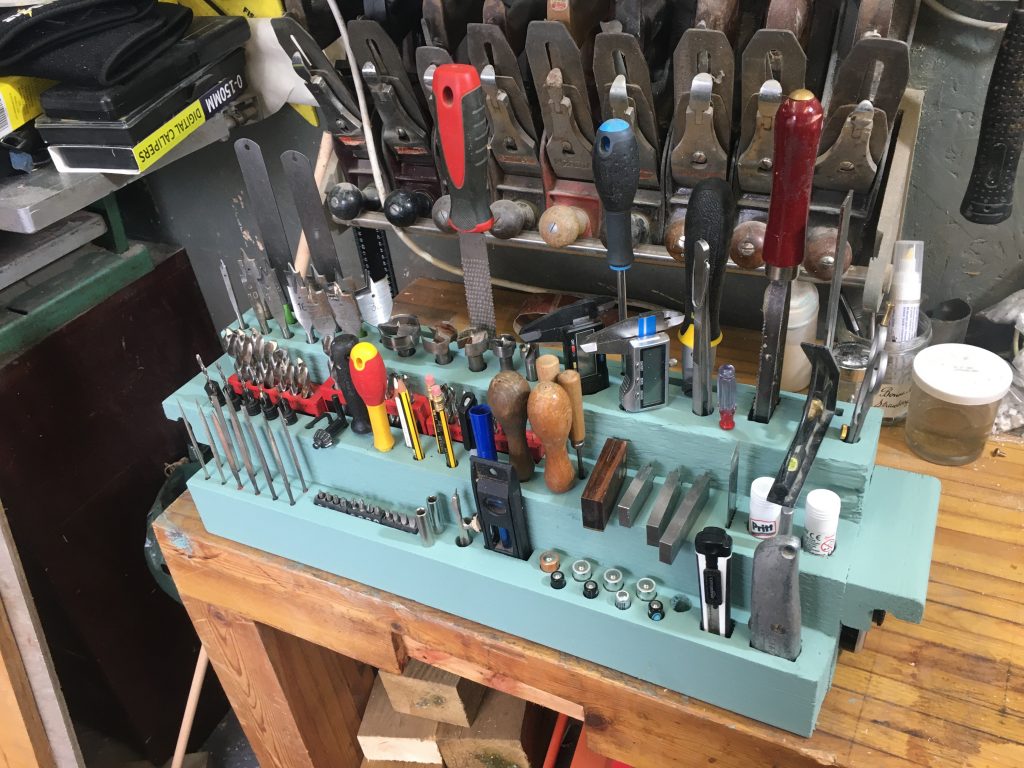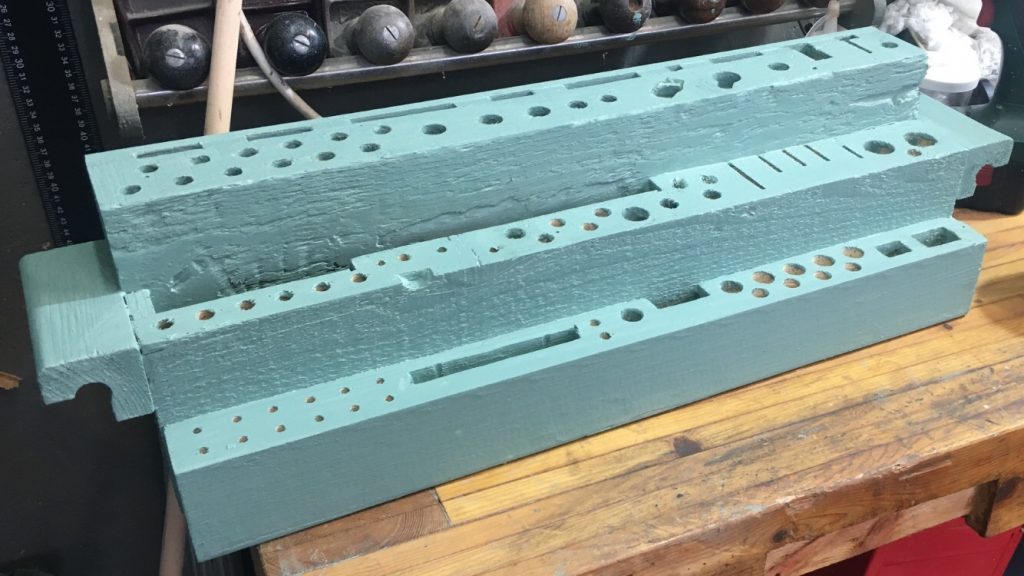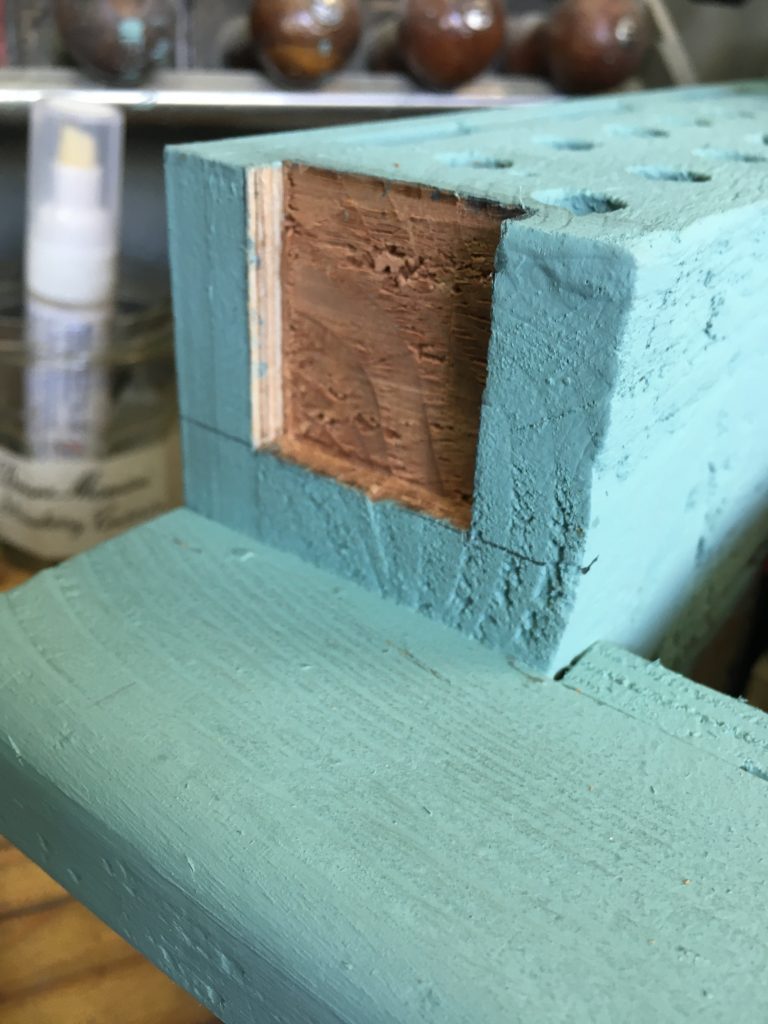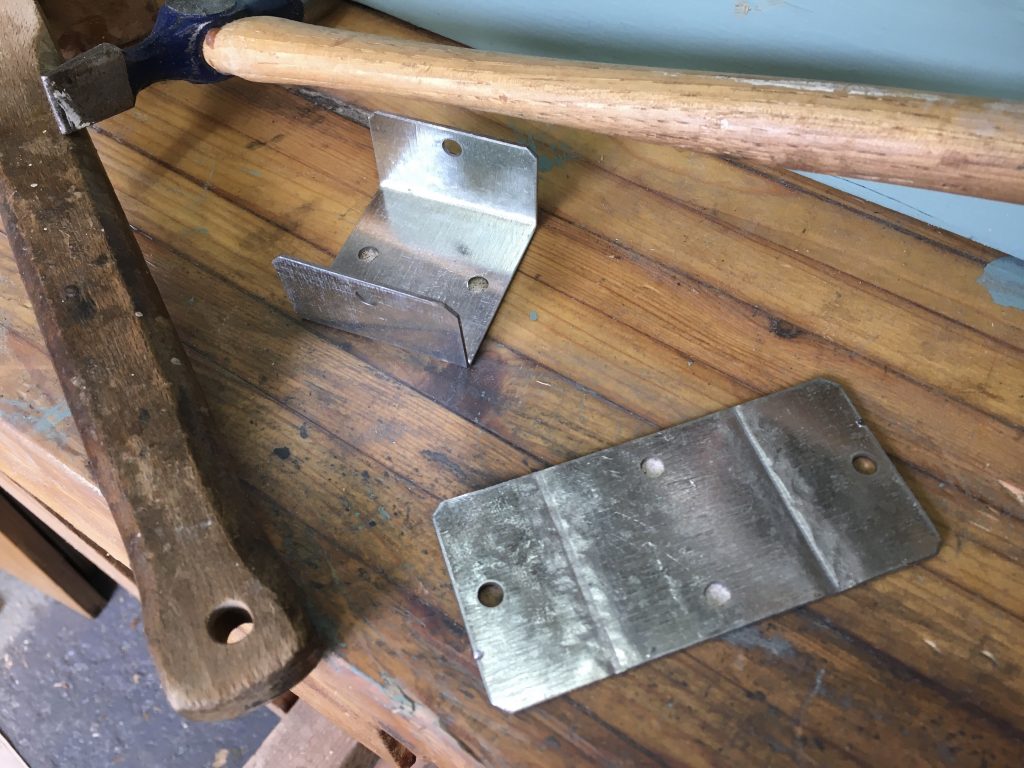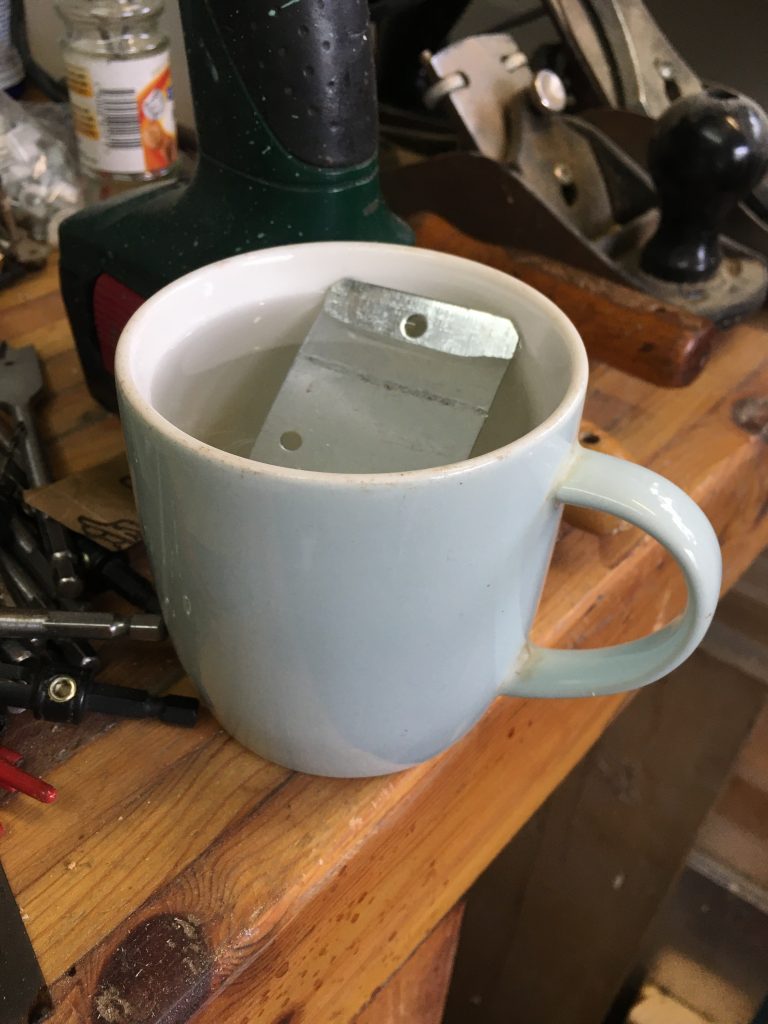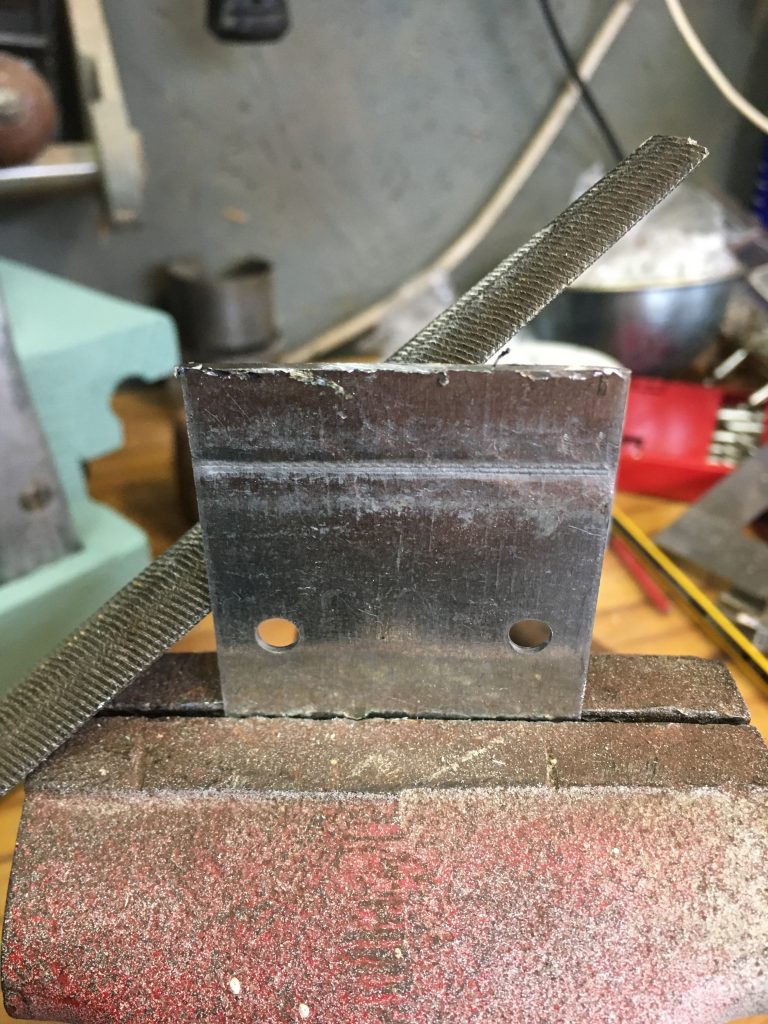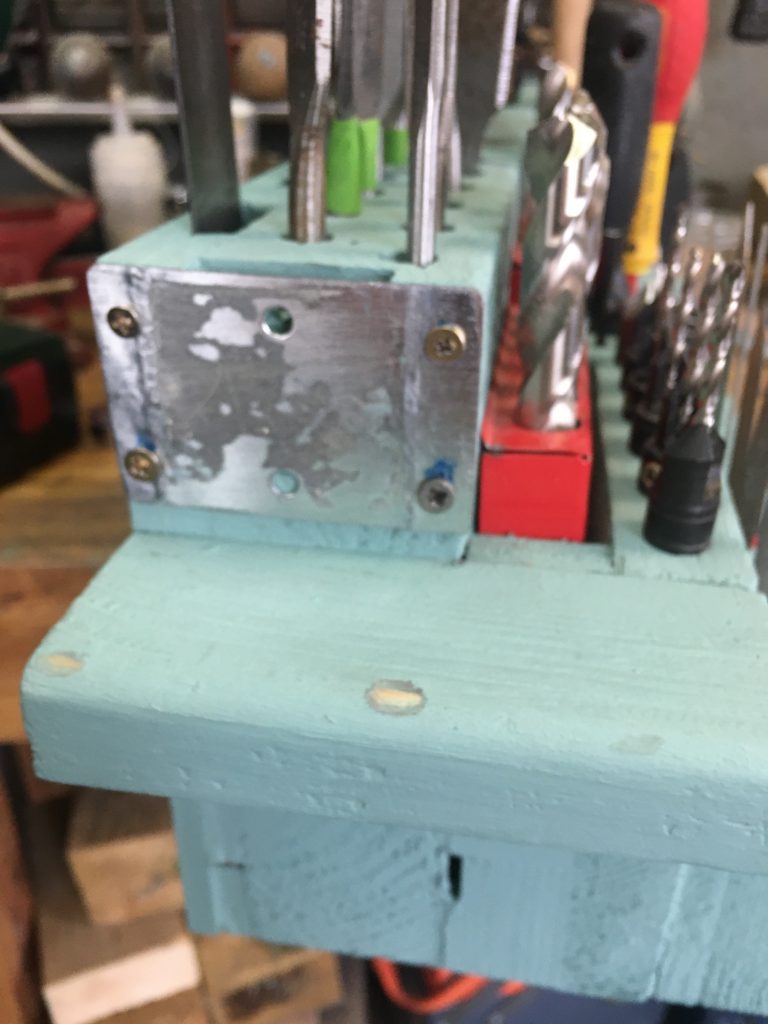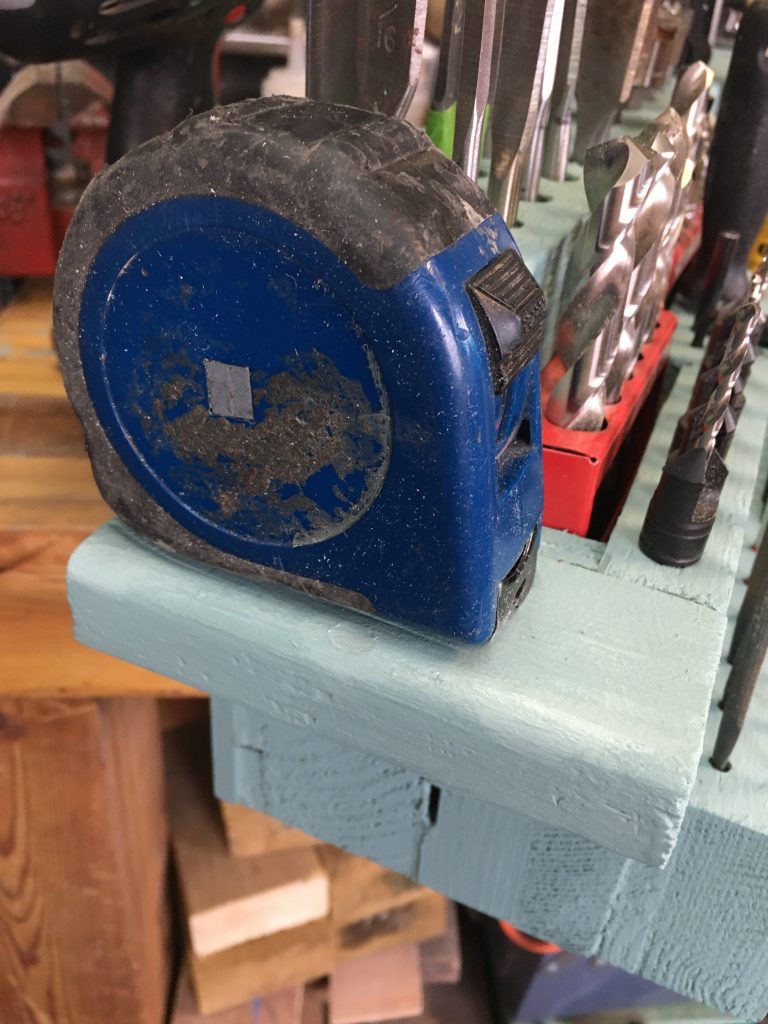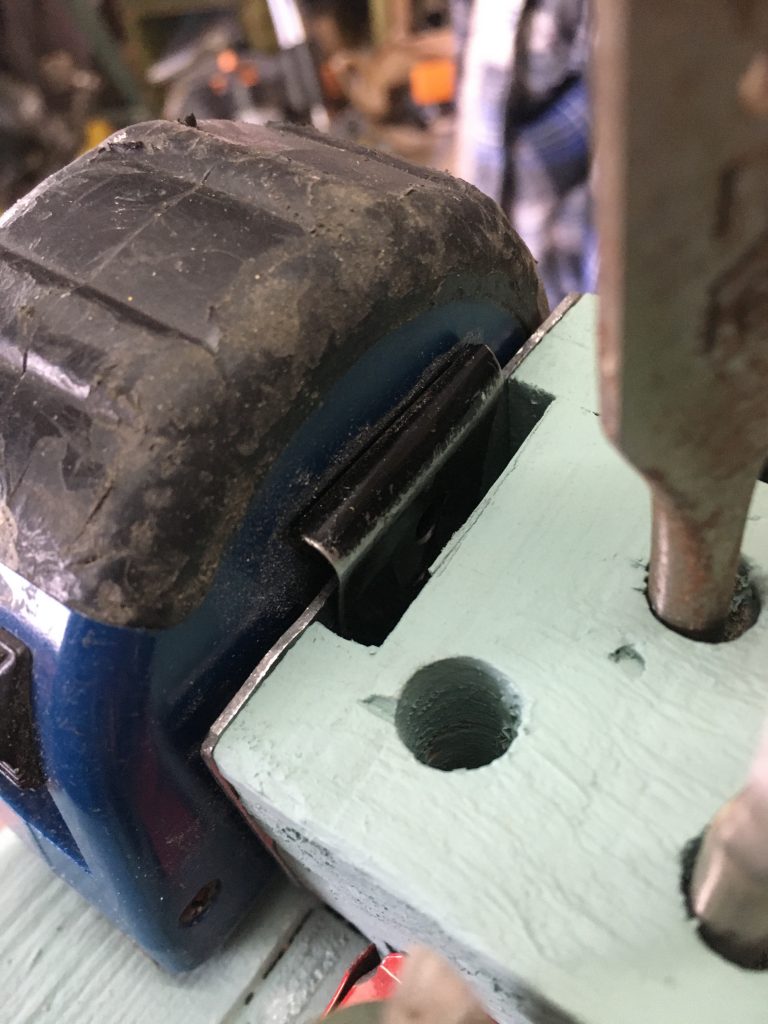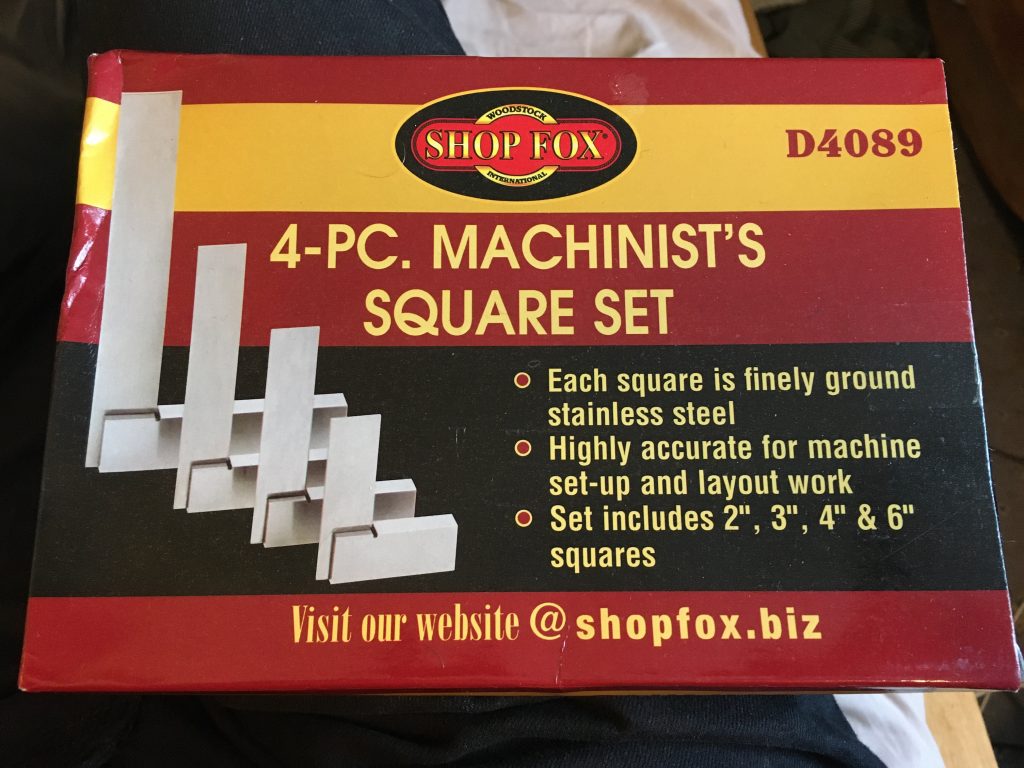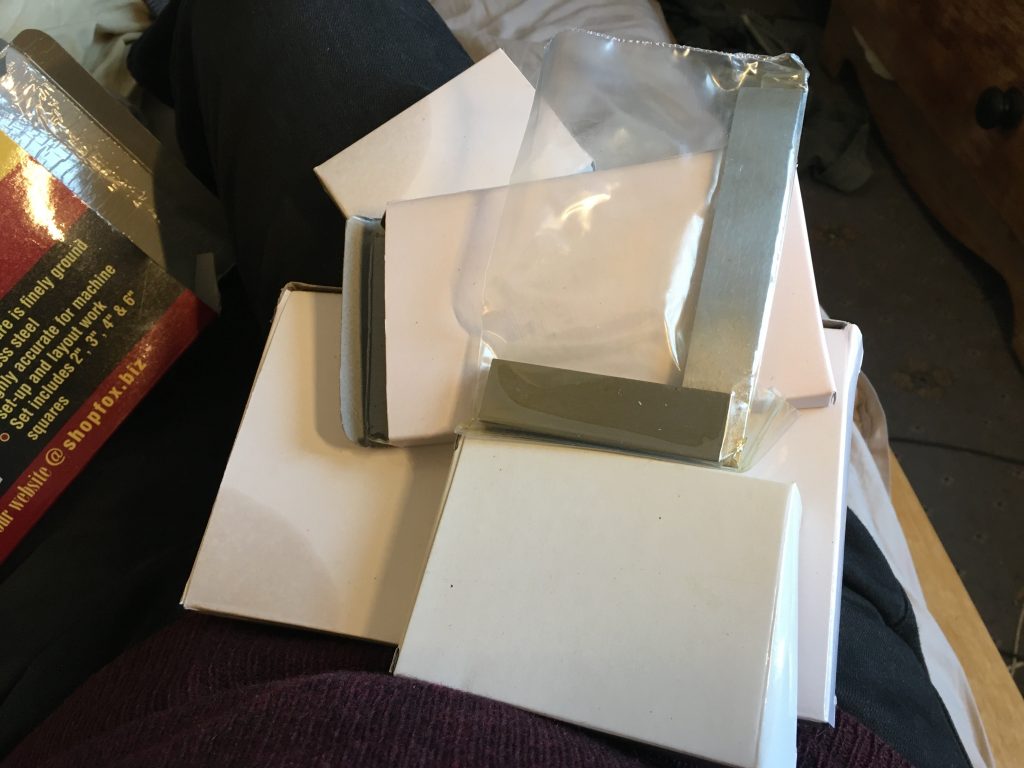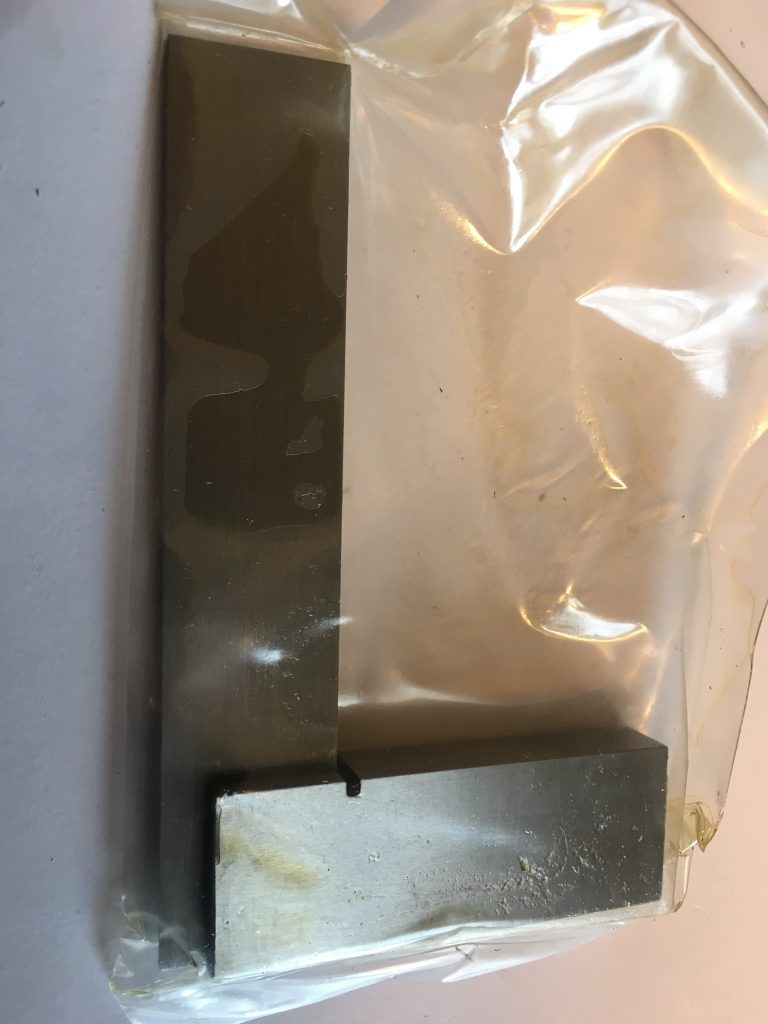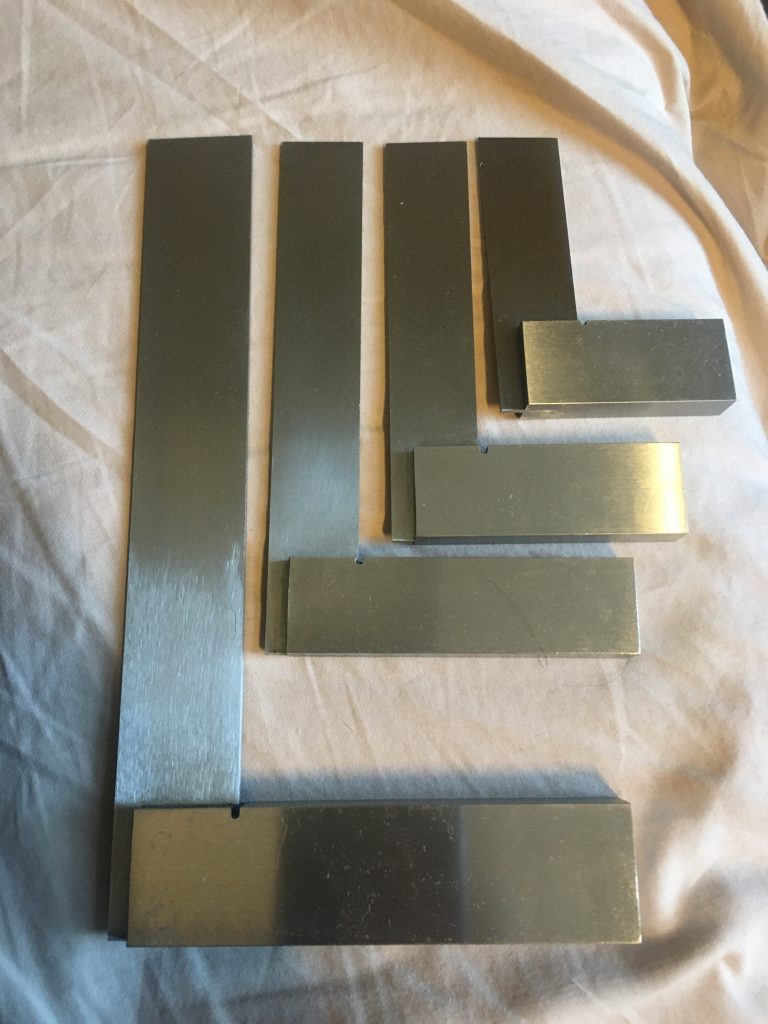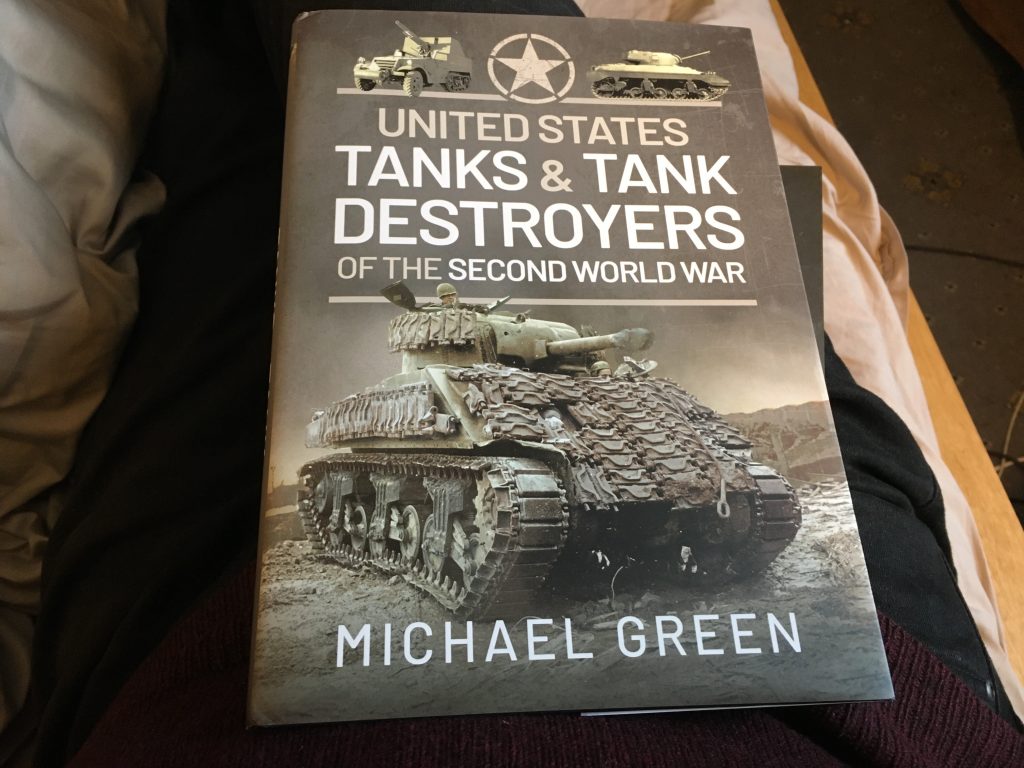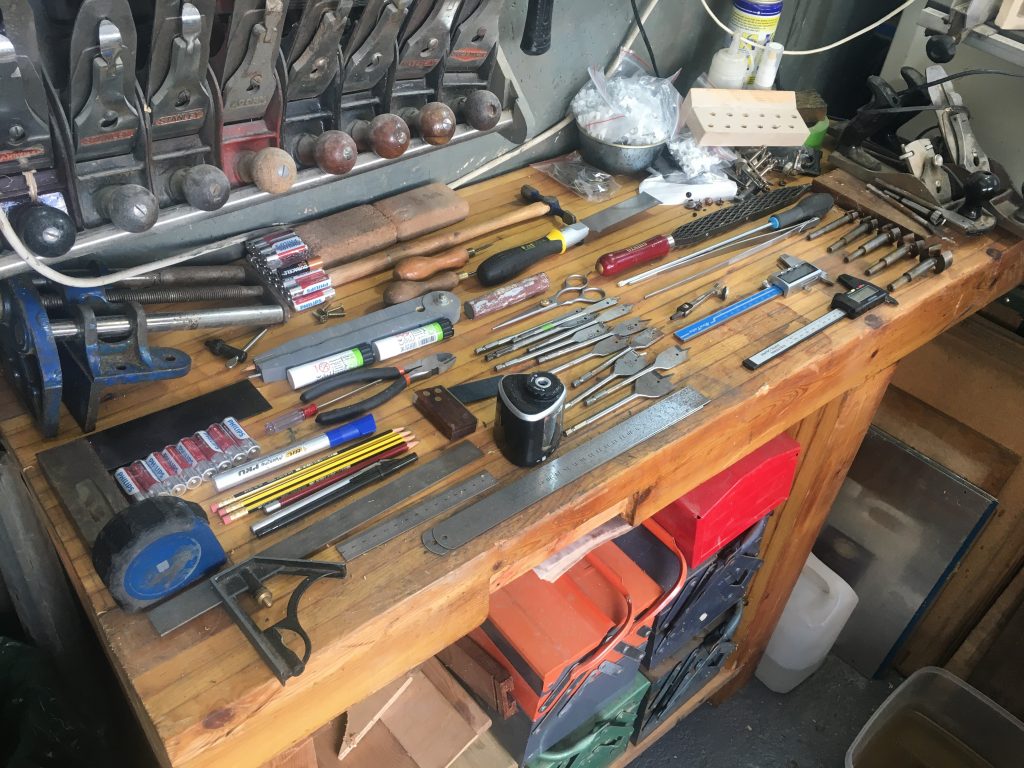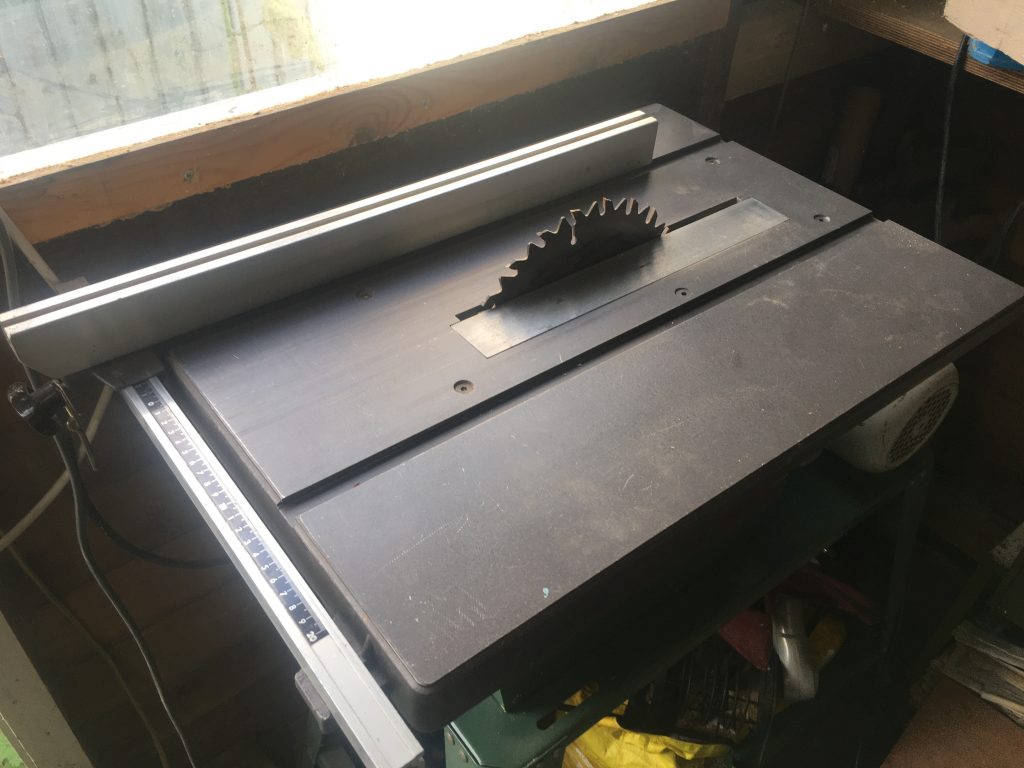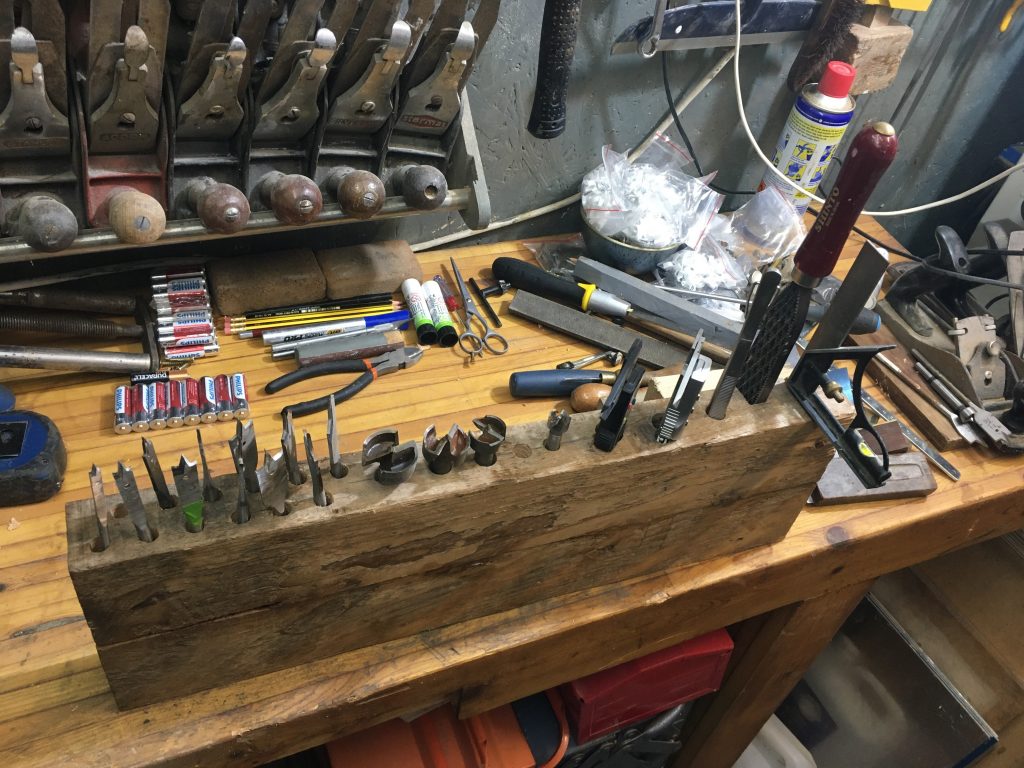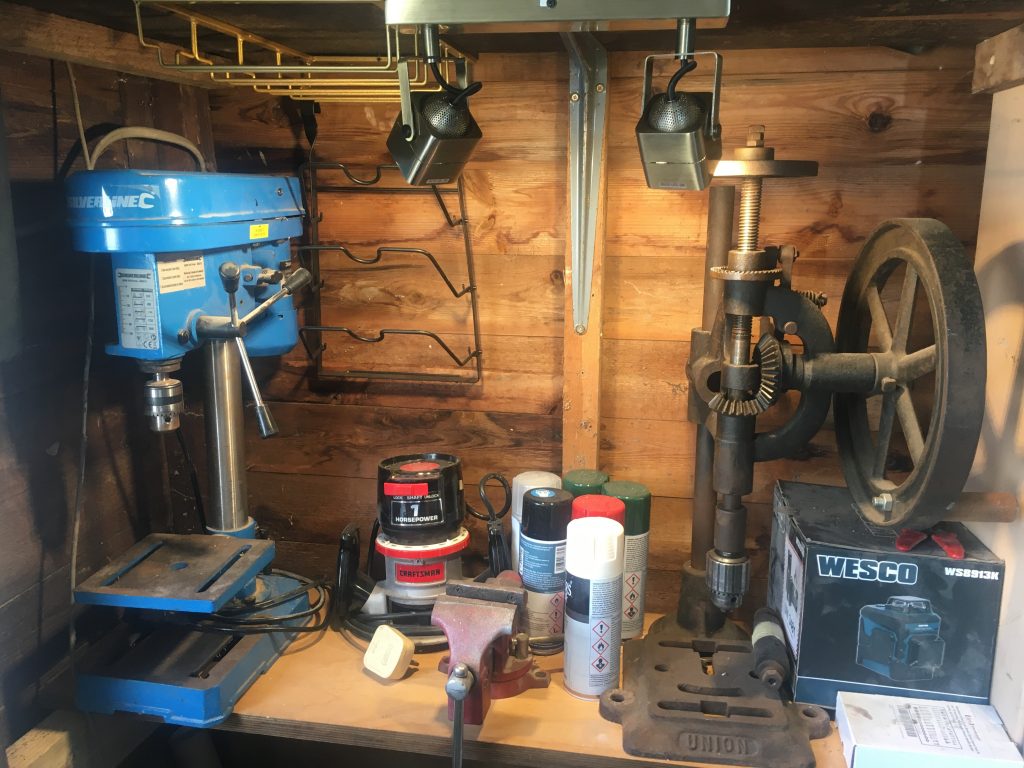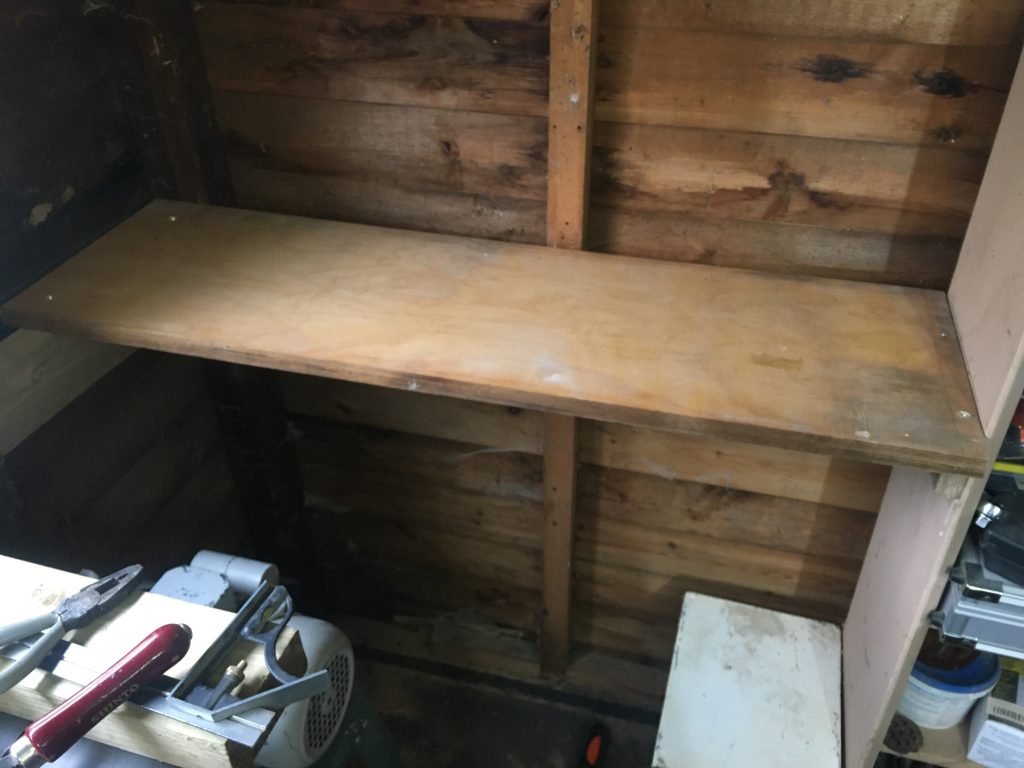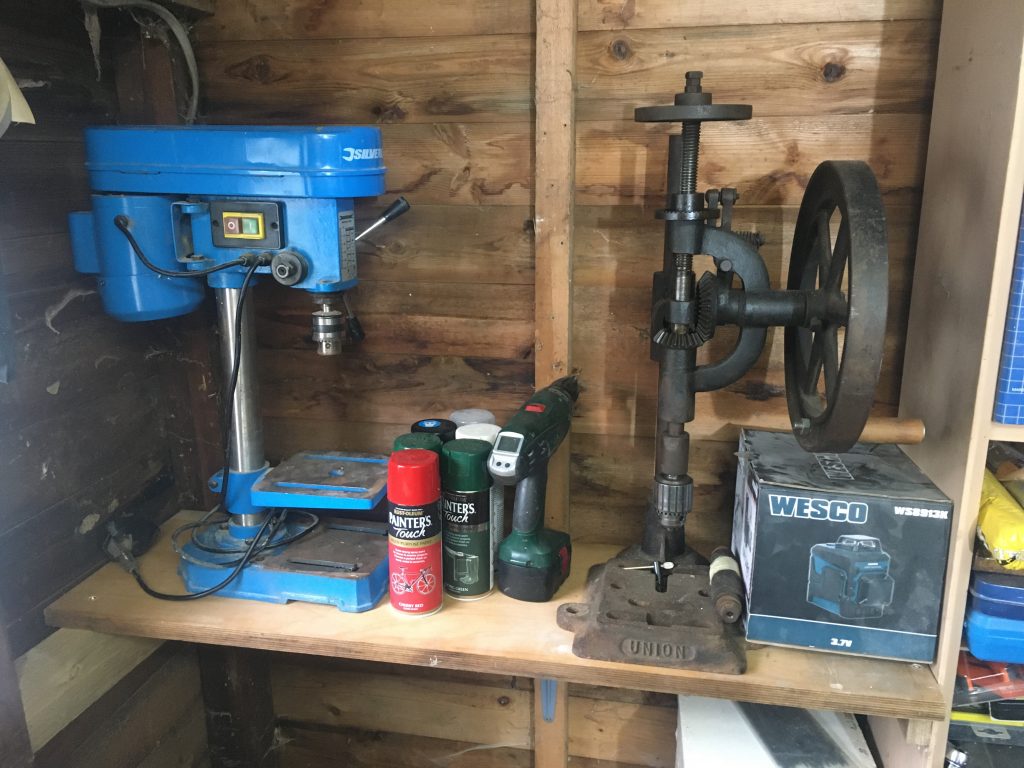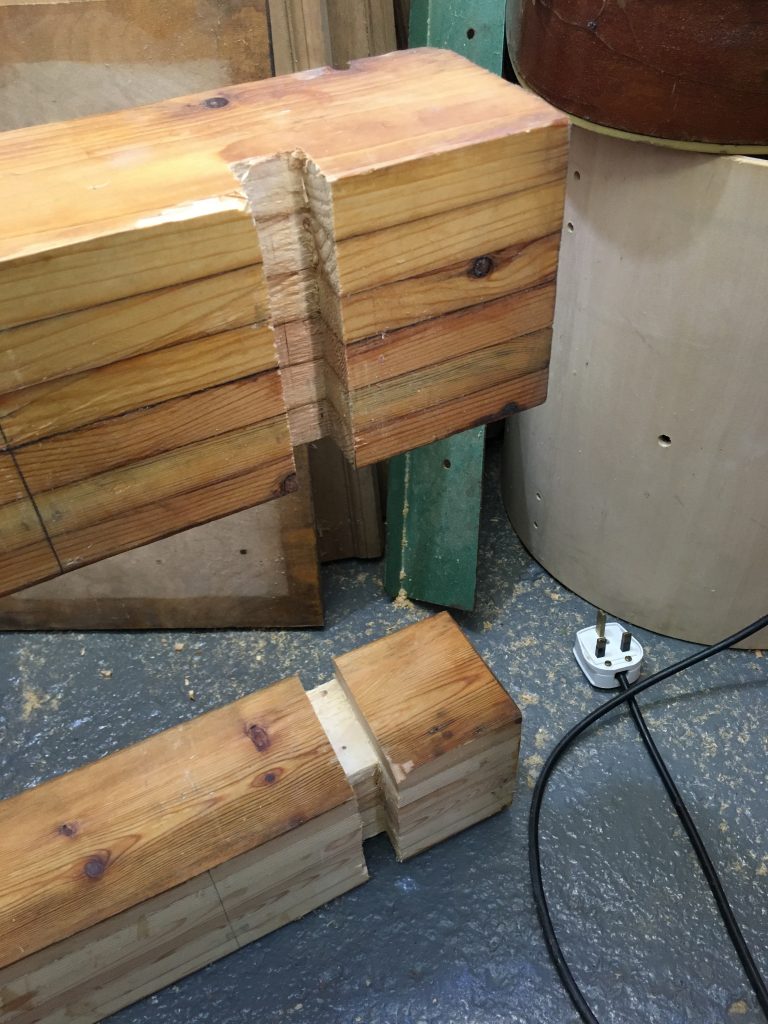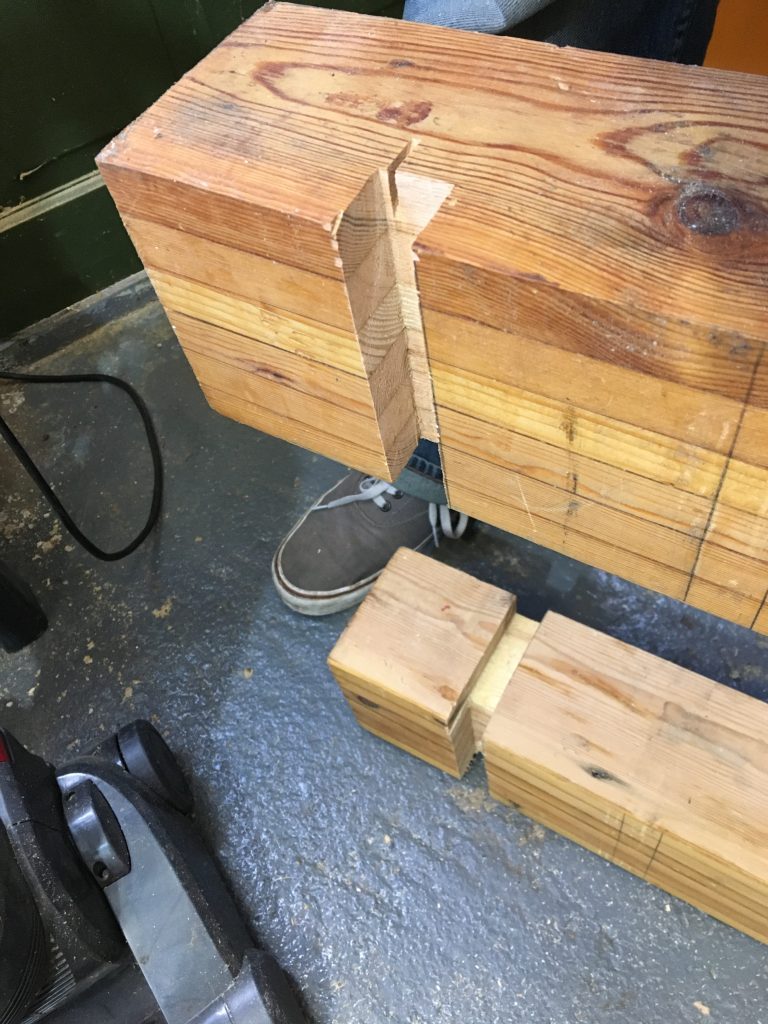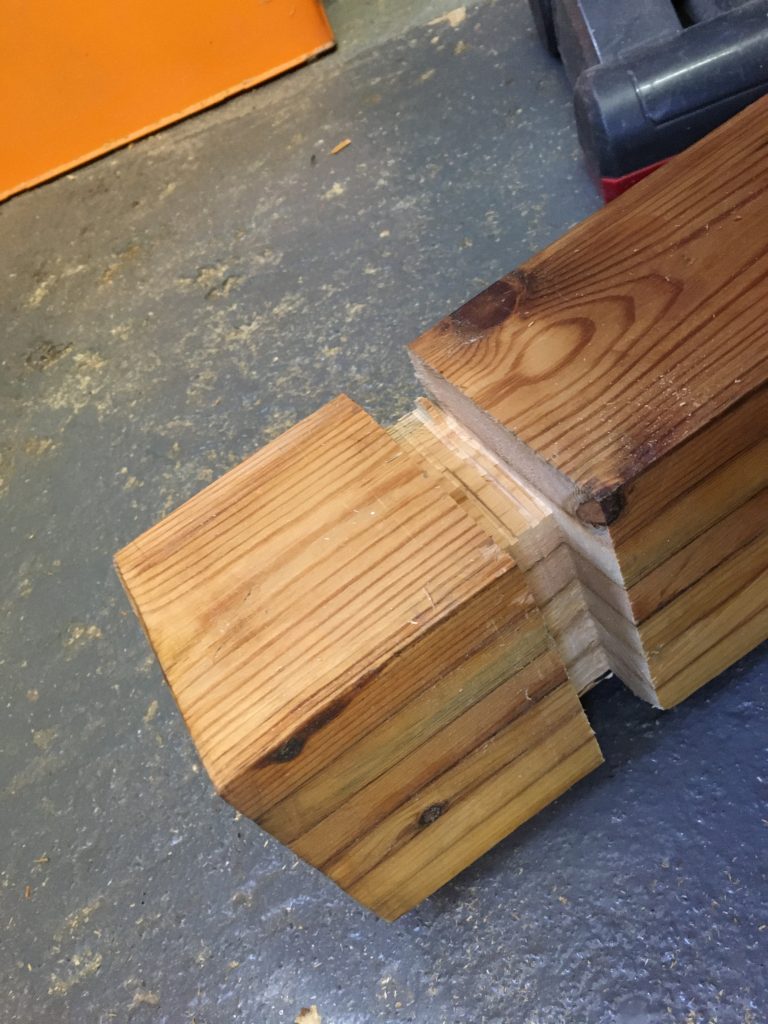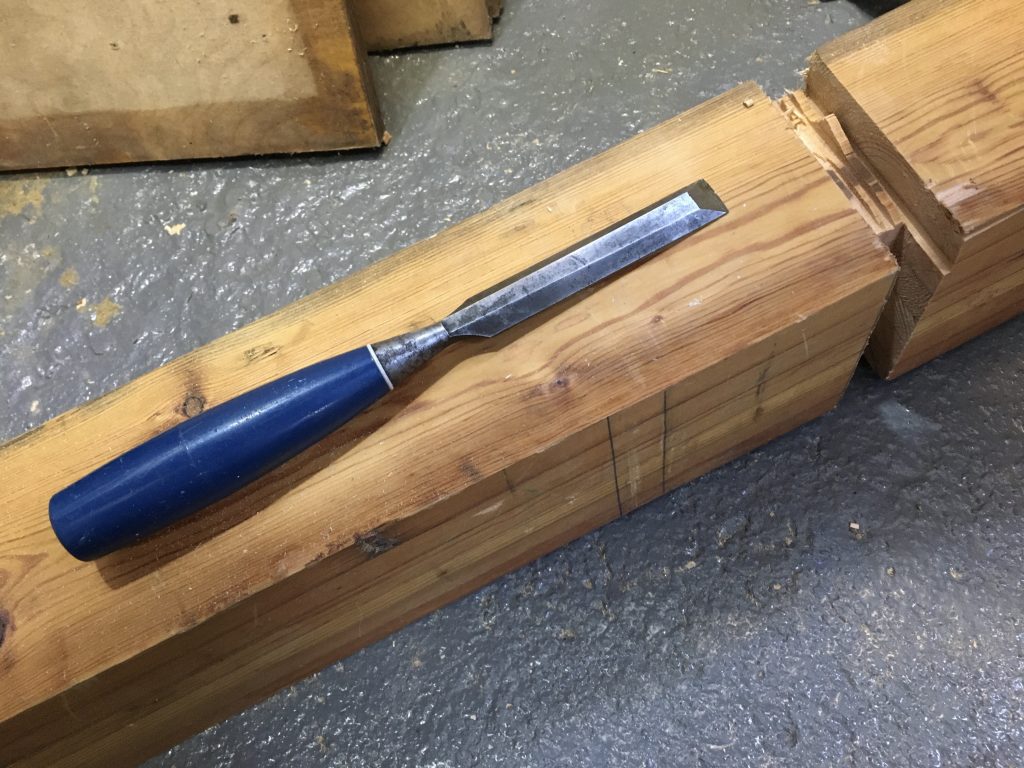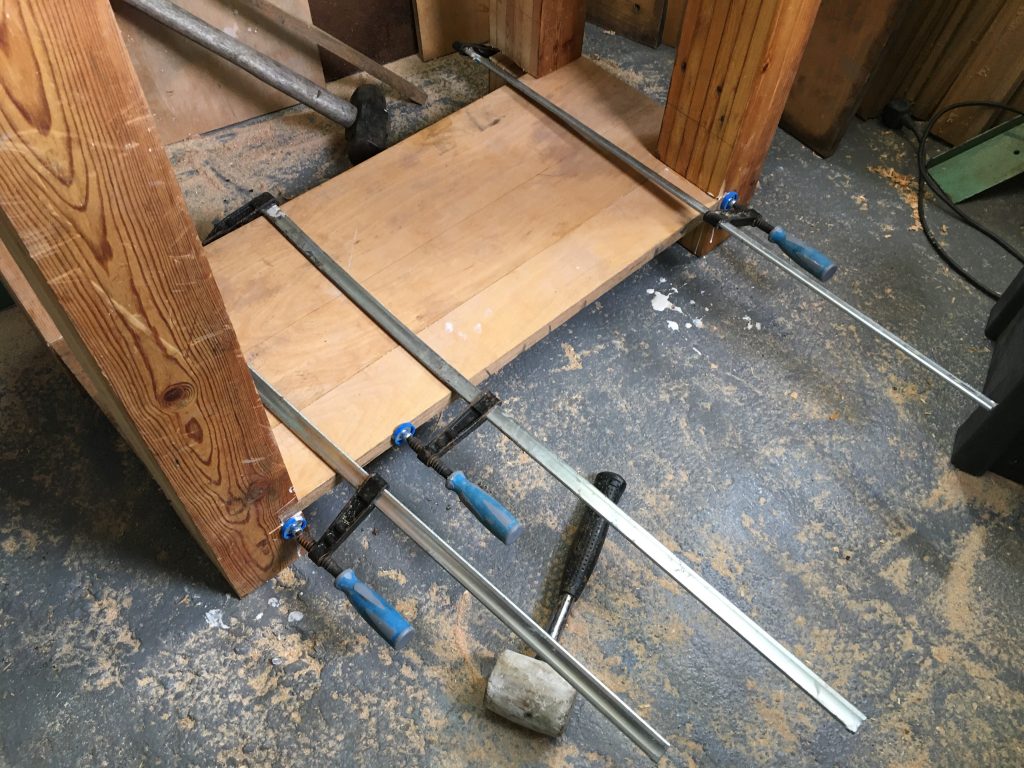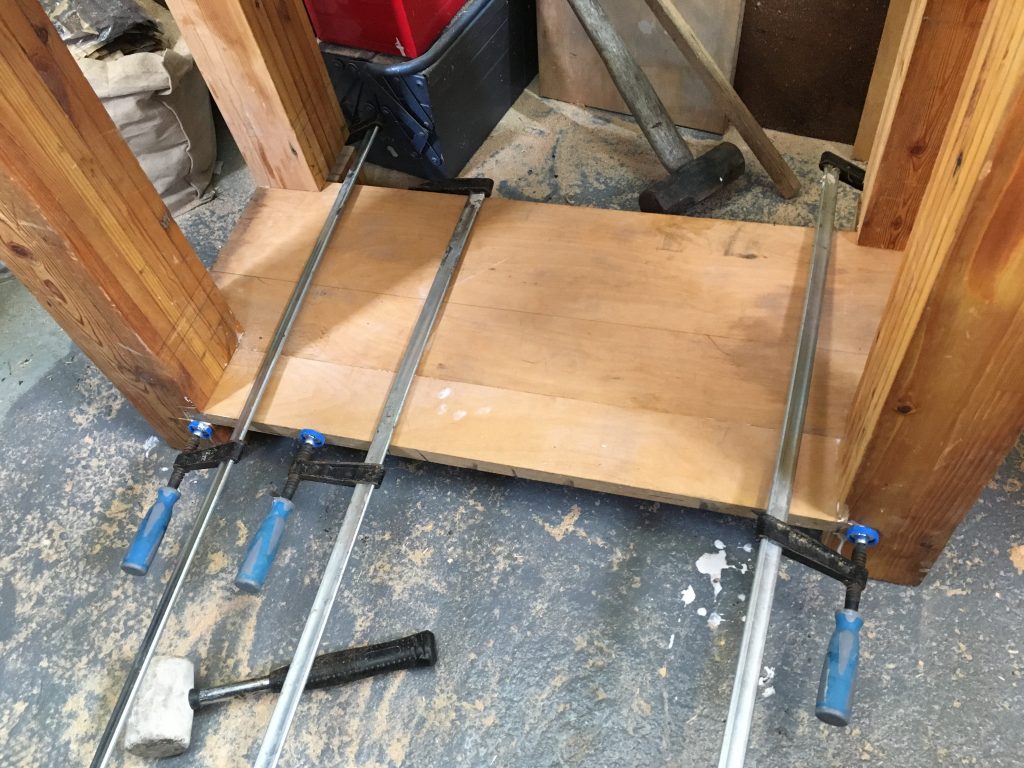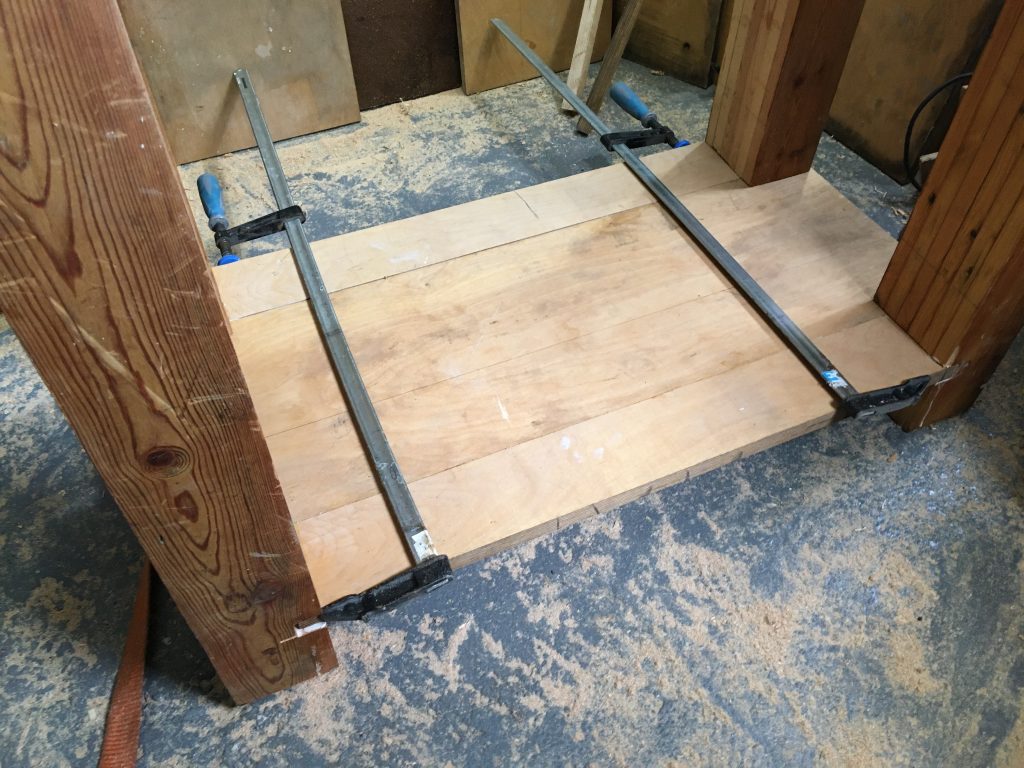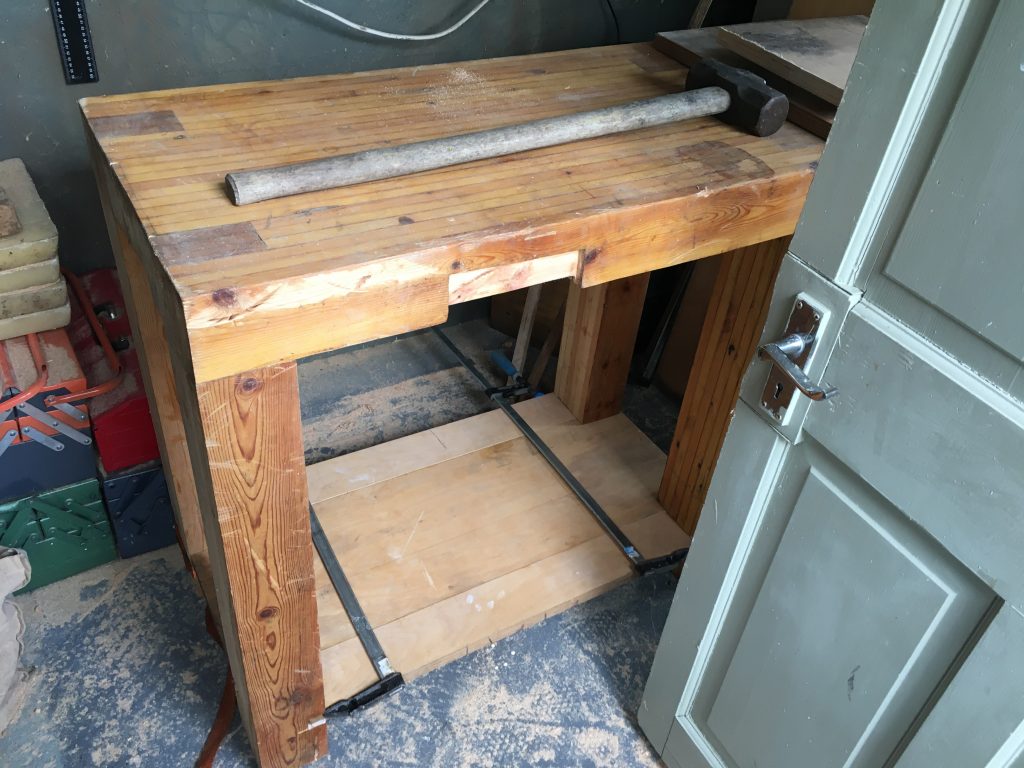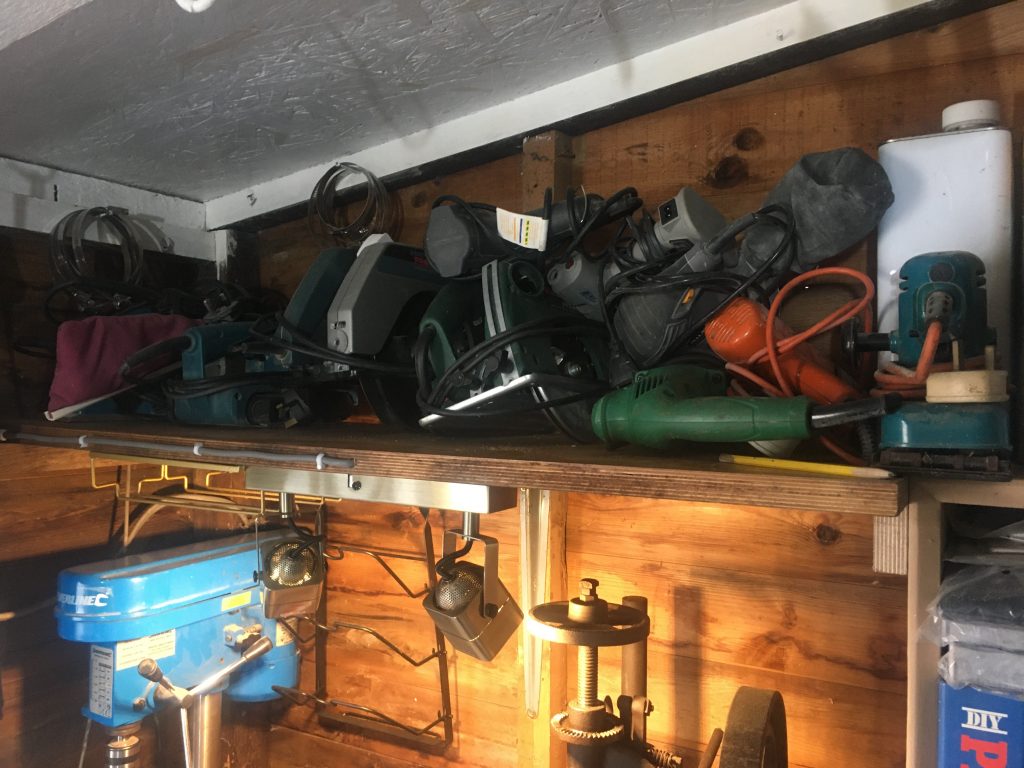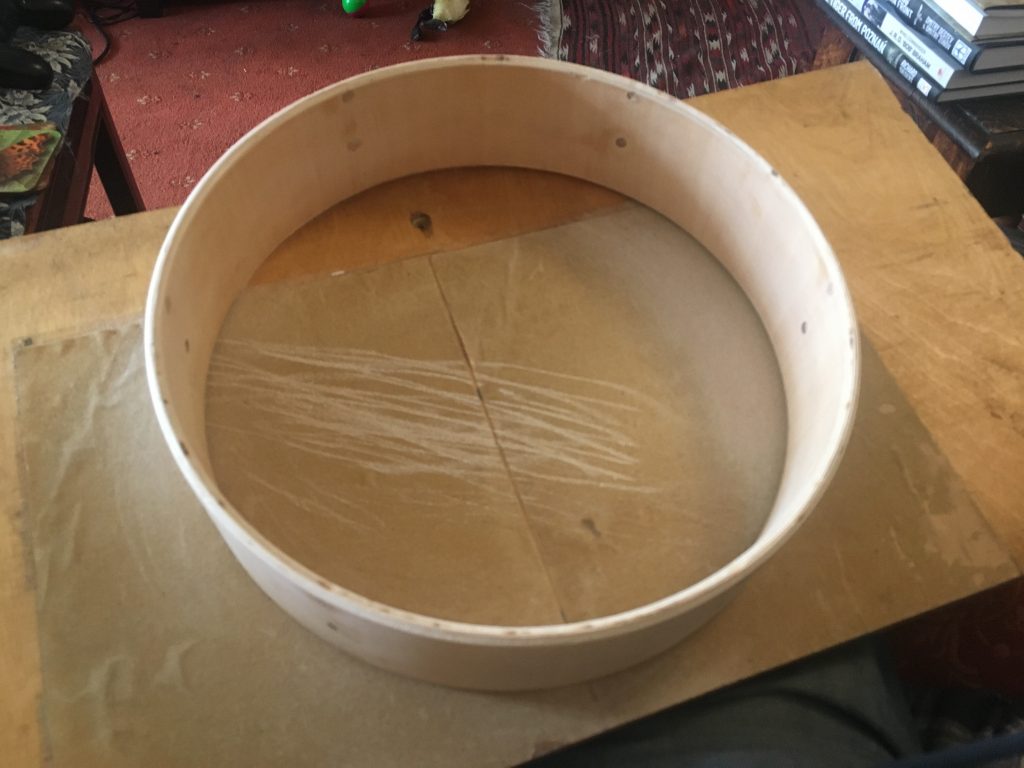
The workshop is fairly clean and tidy now, at last. I decided to make a start on frame drum #2. I’m not really a fan of Irish folk music, hence it not being a ‘bodhran’, as far as I’m concerned! The last frame drum I made was for a person Teresa works with, who is a fan of Oirish folk. So, that was a bodhran!
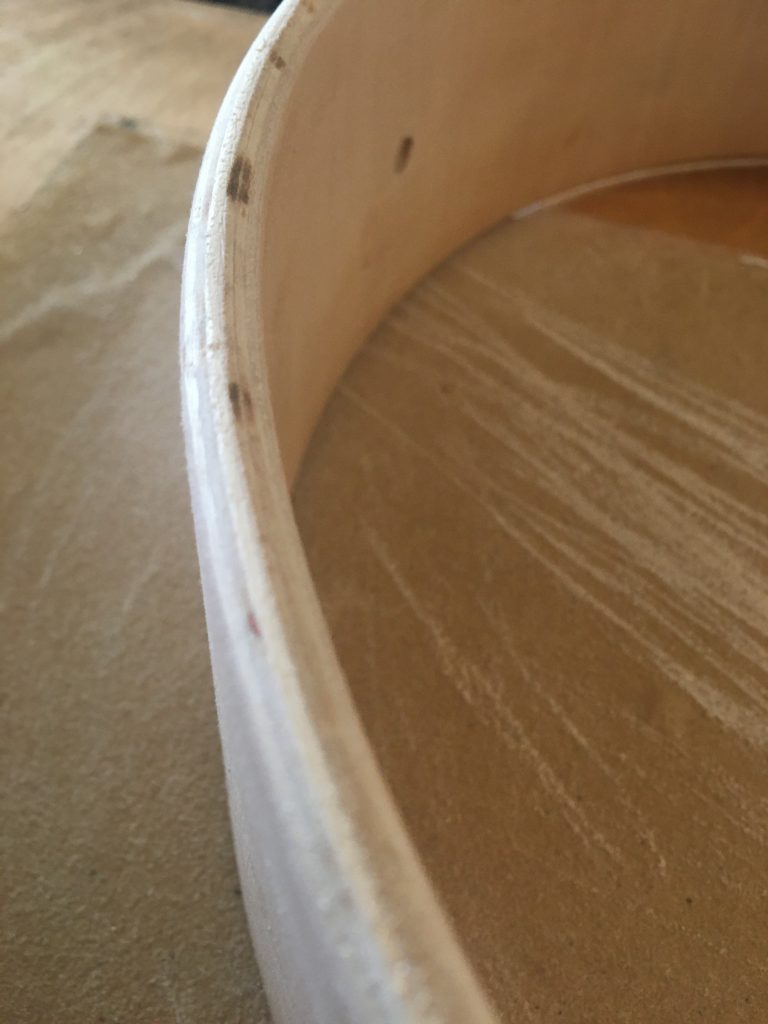
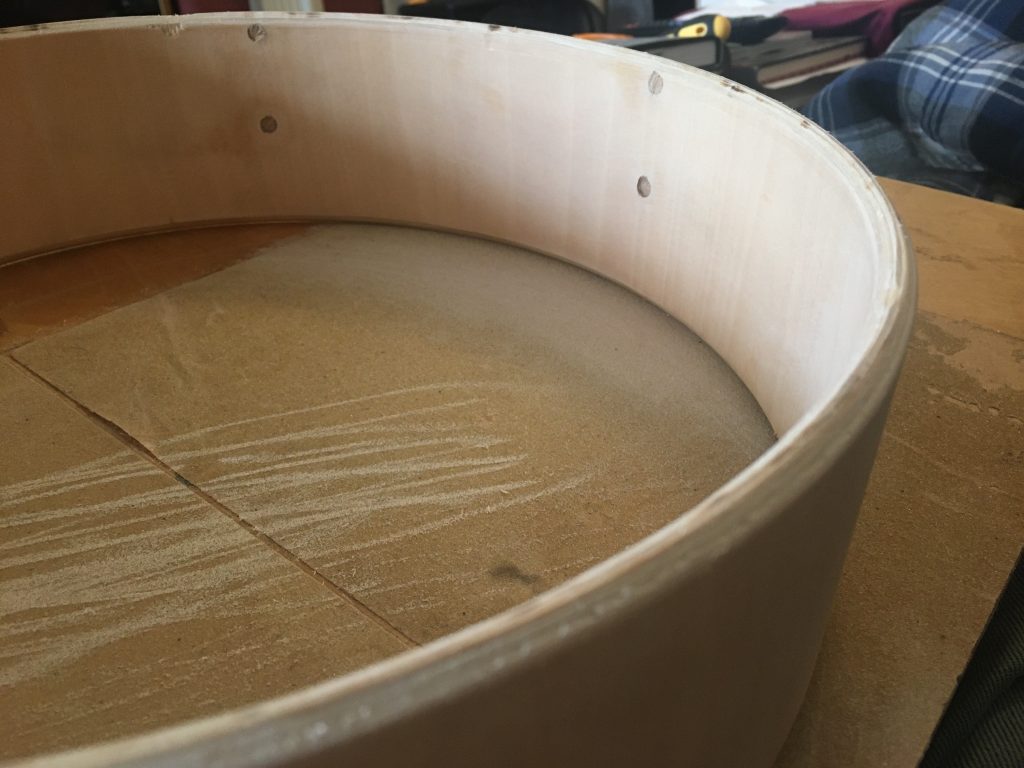
Like this first, I’m making it from an old 13” rack tom. First I cut around the diameter, judging the depth by eye/feel, as opposed to measuring to a set depth. Then I fill a loa of the holes where formerly tuning lugs were mounted, using dowel.
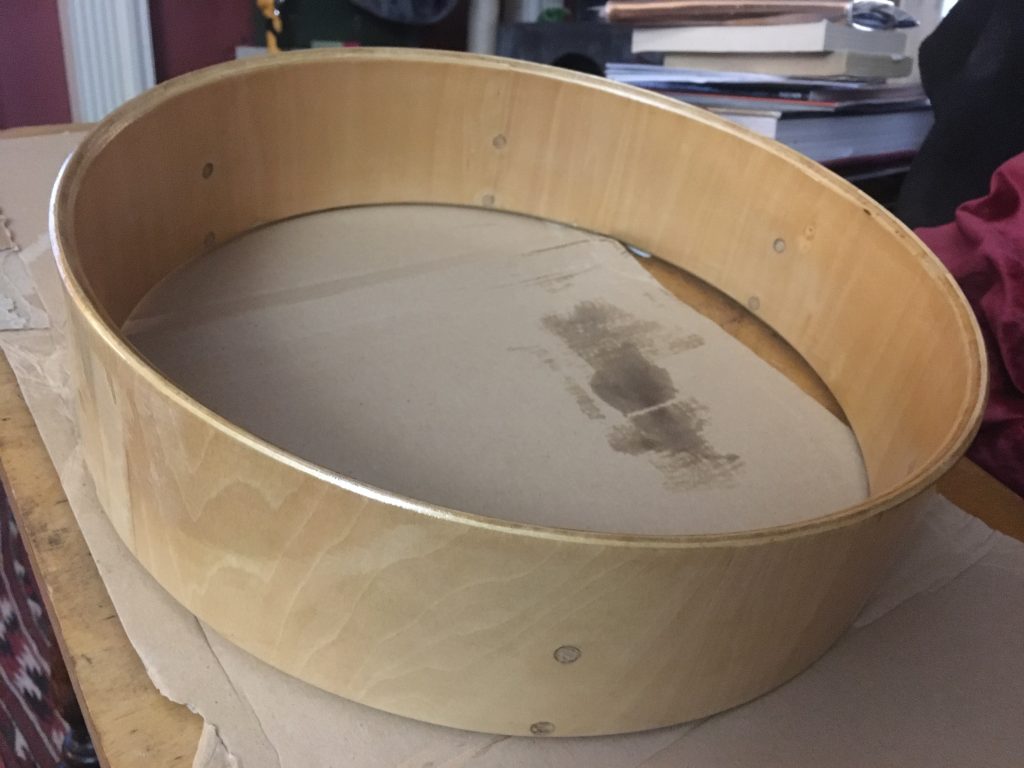
I’ve knocked off for the night, having done that much. I also sanded the cut side. The dowels need to dry overnight, and then it’ll be time to sand then flat, and fill any gaps. if I can I’ll also rout bearing edges around the cut side.
Today, Sunday,31st Nov – Hallowe’en! – I taped off the drum shell, and sanded the exposed area, ready to take the goatskin head, which had been soaking overnight.
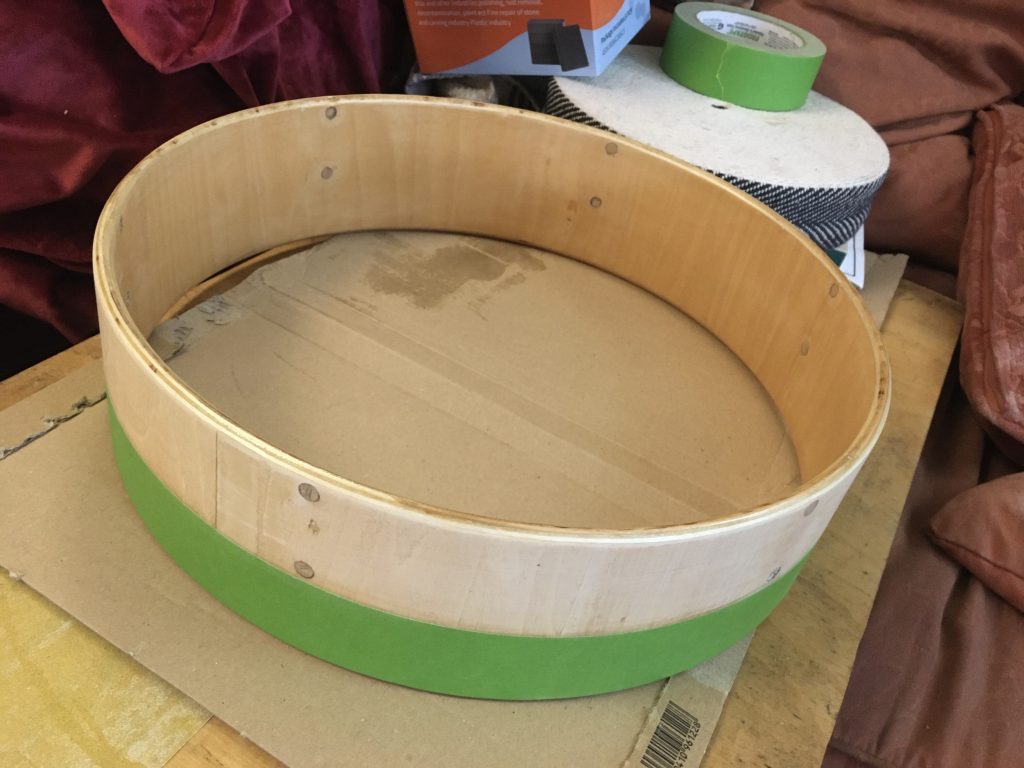
I forgot about the details of this process, and has to re-learn them on the fly: stretch still wet skin; fix using wood glue, clamps, and finally elastic, wound round several times; clamp elastic; re-stretch skin, re-clamp, and leave to dry/tighten.
This didn’t go as smoothly as last time. And Chester, our beloved moggy, savaged the goatskin, which was very poorly packaged, whilst I was out at work. When I got home, I found he’d left tooth and claw holes in it.
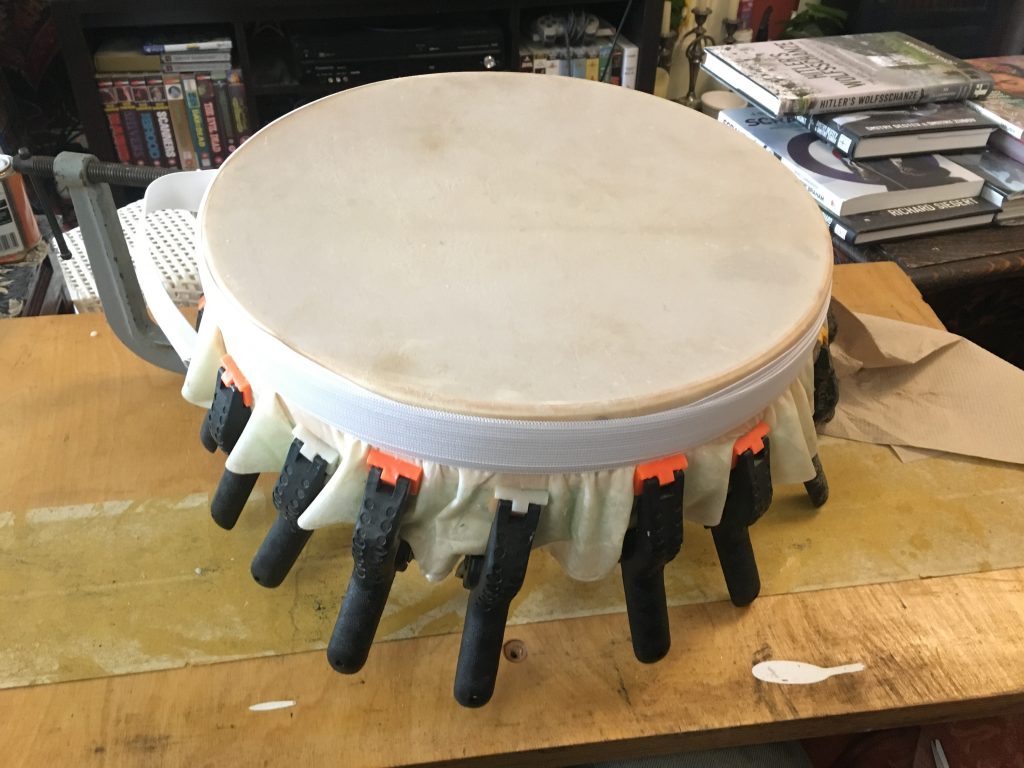
This meant I couldn’t place the skin equidistant from all edges. Instead it was quite a way off centre. This meant that when securing it to the drum, some areas had excessive amounts of skin to grip on/stretch, whilst others had barely enough to grip, or gain any purchase when stretching the head.
I’m just hoping that when it dries out it’ll be tight enough to sound ok. My first attempt, perfectly undamaged, and therefore well centred, came out very nicely. Perhaps too tight. So I did want a lower tone in this second one. But not too loose/low/baggy… we shall see, or rather hear, once it’s dried.

